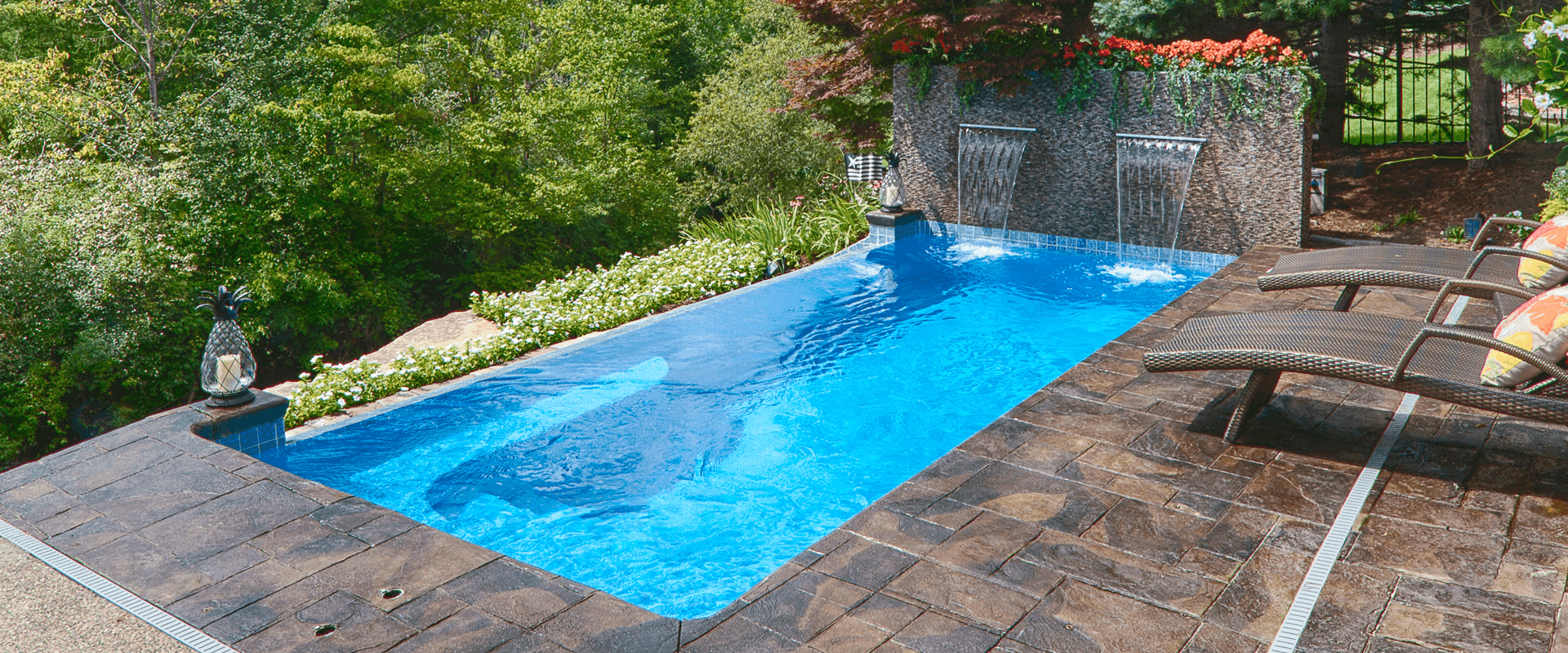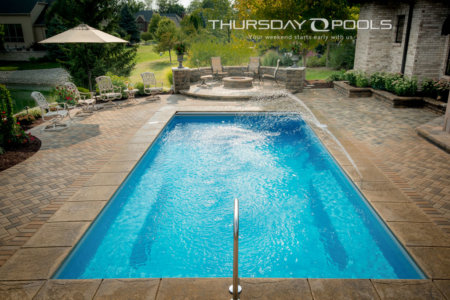877-929-7665
Swimming Pool Myths and Facts
Question: Which of the following is true?
A. You must wait an hour after eating to swim.
B. Chlorine turns your hair green.
C. Swimming pools take a lot of time and money to maintain.
D. People who own pools don’t really use them.
E. None of the above.
The correct answer is E. None of the above.
There are a lot of swimming pool myths and facts floating around (pun intended) about swimming and swimming pool ownership out there. Let’s take a minute to debunk those swimming pool myths, shall we?
You must wait an hour after eating to swim.
Sure, mother typically knows best, but, if you have memories of being sidelined at the pool after lunch, wistfully watching your friends having fun, your mom was subscribing to an old wives’ tale. You don’t really have to wait an hour after eating to swim. The thinking behind this myth is that you’re more likely to get a “stitch” or cramp if you swim on a full stomach, but there’s no medical evidence to support it. If you’re prone to cramps, you might want to stretch a bit before swimming, and of course, you need to adhere to pool safety rules. But you can feel free to enjoy your dinner, and then jump in and swim off those calories.
Chlorine turns your hair green.
The greenish tint that some blonde-haired swimmers sport after swimming is actually caused by copper sulfate, which is used to combat algae. You may or may not use much of it, depending on what kind of pool you have. Algae is most likely to form in inground pools with vinyl liners, where it can hide and grow in the pool seams and crevices, and in gunite pools, in the rough surface of the concrete. Inground pool owners who enjoy the low-maintenance fiberglass pool lifestyle will find they don’t need algaecides as often. Either way, chlorine has had a bad rap on this, and it’s not the culprit.
Swimming pools take a lot of time and money to maintain.
Again, the level of maintenance your inground pool requires depends on what kind of pool you choose. Because of their durable, gel coat finish, fiberglass pools require fewer pool maintenance chemicals, which means less time and less money for the pool owner. Vinyl pools require, on average, about double the amount of pool maintenance chemicals than fiberglass, and gunite is a whopping four times more.
Sure, getting the hang of your pool maintenance schedule in the beginning can mean a big learning curve. However, if you stay on top of it, regular maintenance for a fiberglass pool should not take longer than one to two hours per week. The rest of the time, you’ll be chilling in your fabulous pool and wondering how you ever lived without it.
People who own pools don’t really use them.
Families who own inground pools have a great way to keep their kids off their devices and engaged in family life. Homes with pools become the go-to place for kids to gather, so you’ll be able to get to know your kids’ friends. And it’s not just your kids’ friends who will enjoy coming over. Your pool is a wonderful place to host parties and reconnect with people you care about. Pool owners can enjoy the luxury of a staycation every day of the week throughout the swim season.
But there’s more to pool ownership than just socializing. Pools are good for you! Swimming is one of the most popular forms of exercise in the US, and it’s a great way to lose weight, reduce chronic pain and lower your stress level. Once you own your own inground pool, you’ll find every reason in the world to spend your time there.
Take the plunge. (And you don’t have to wait an hour after you eat to do it.)
Now that we’ve debunked some of the myths of pool ownership, are you thinking that owning a pool may be right for you? Take the plunge today by getting a FREE estimate on a fabulous fiberglass pool. You’ll be in the swim before you know it.
#PSPExpo #PSPExpo2019 #NewOrleans

